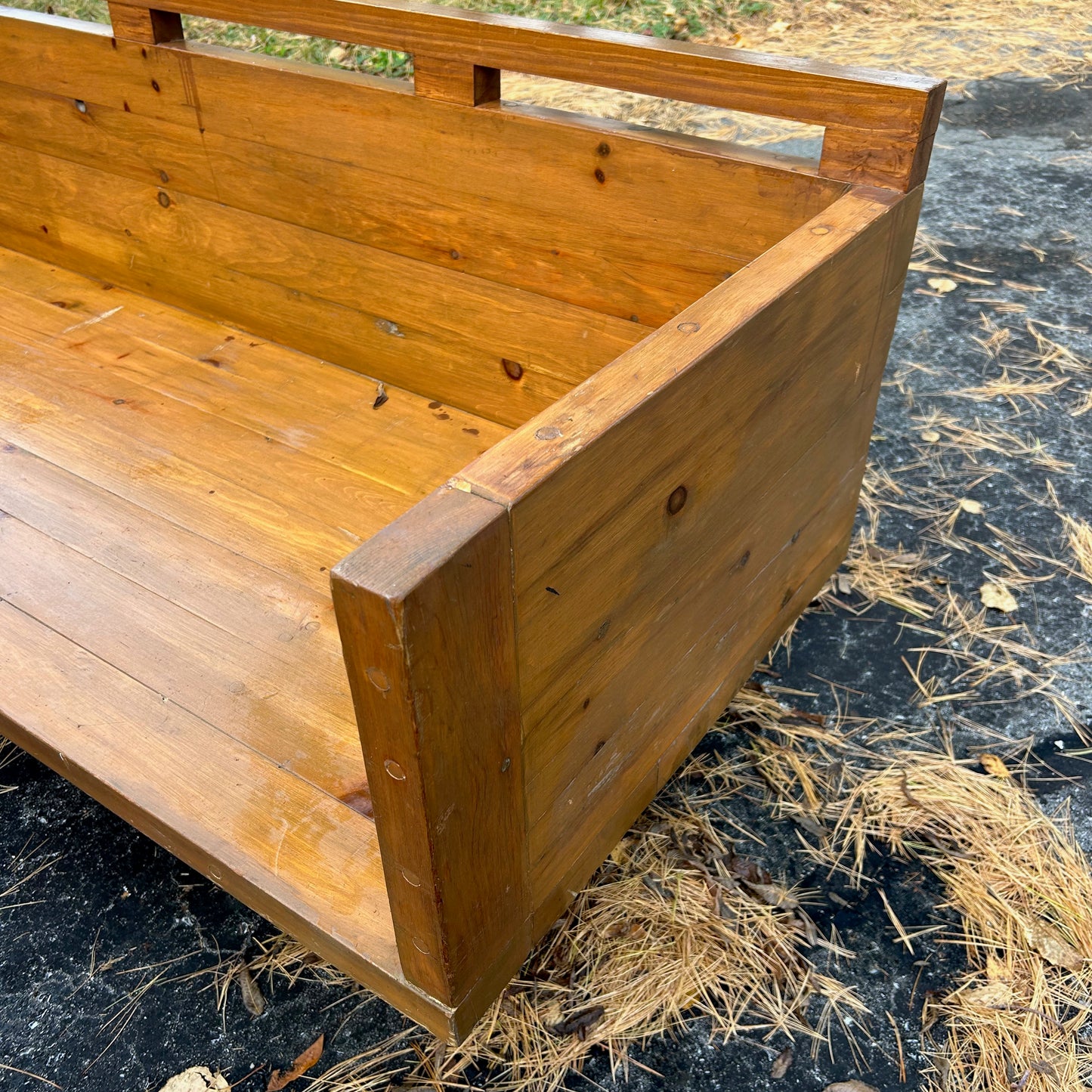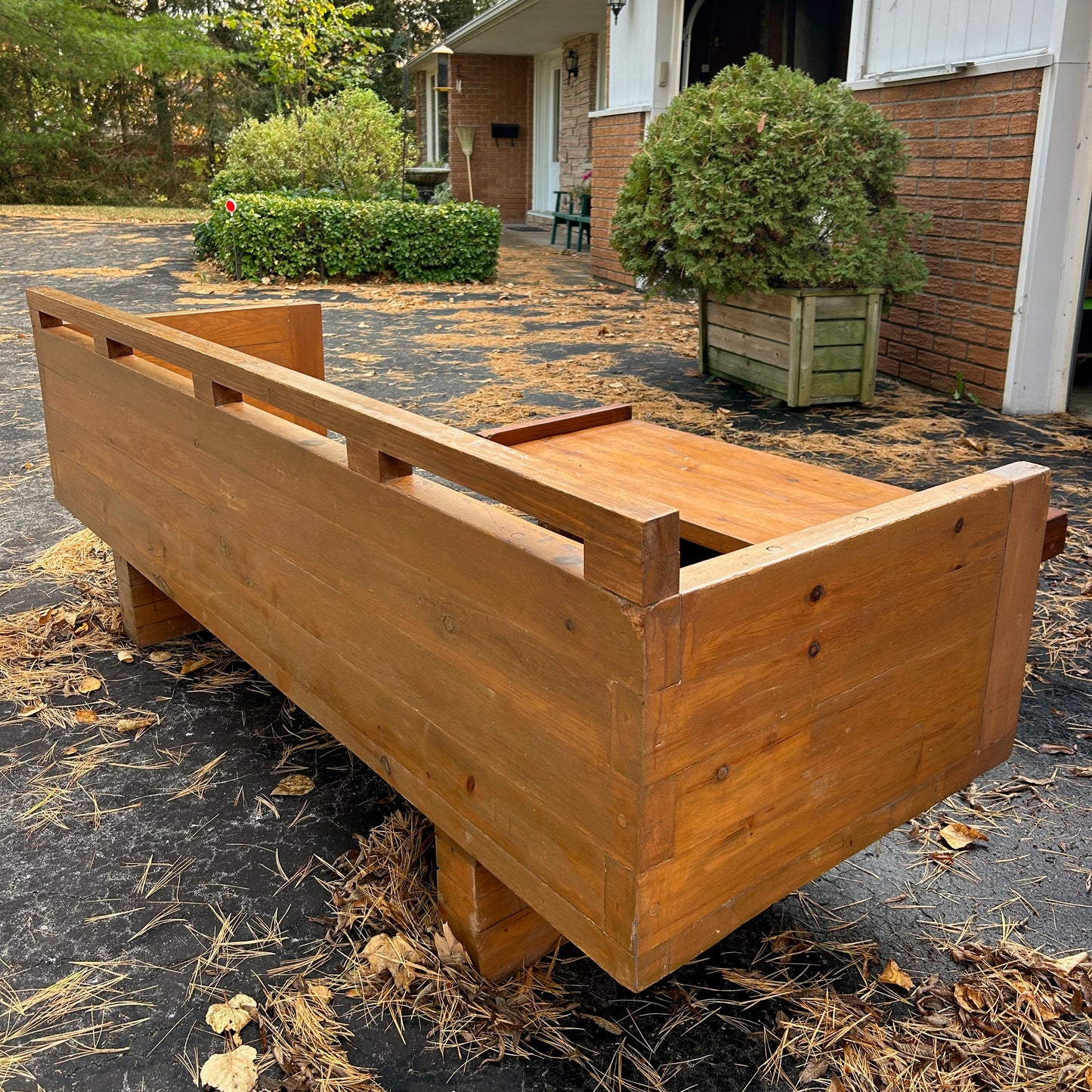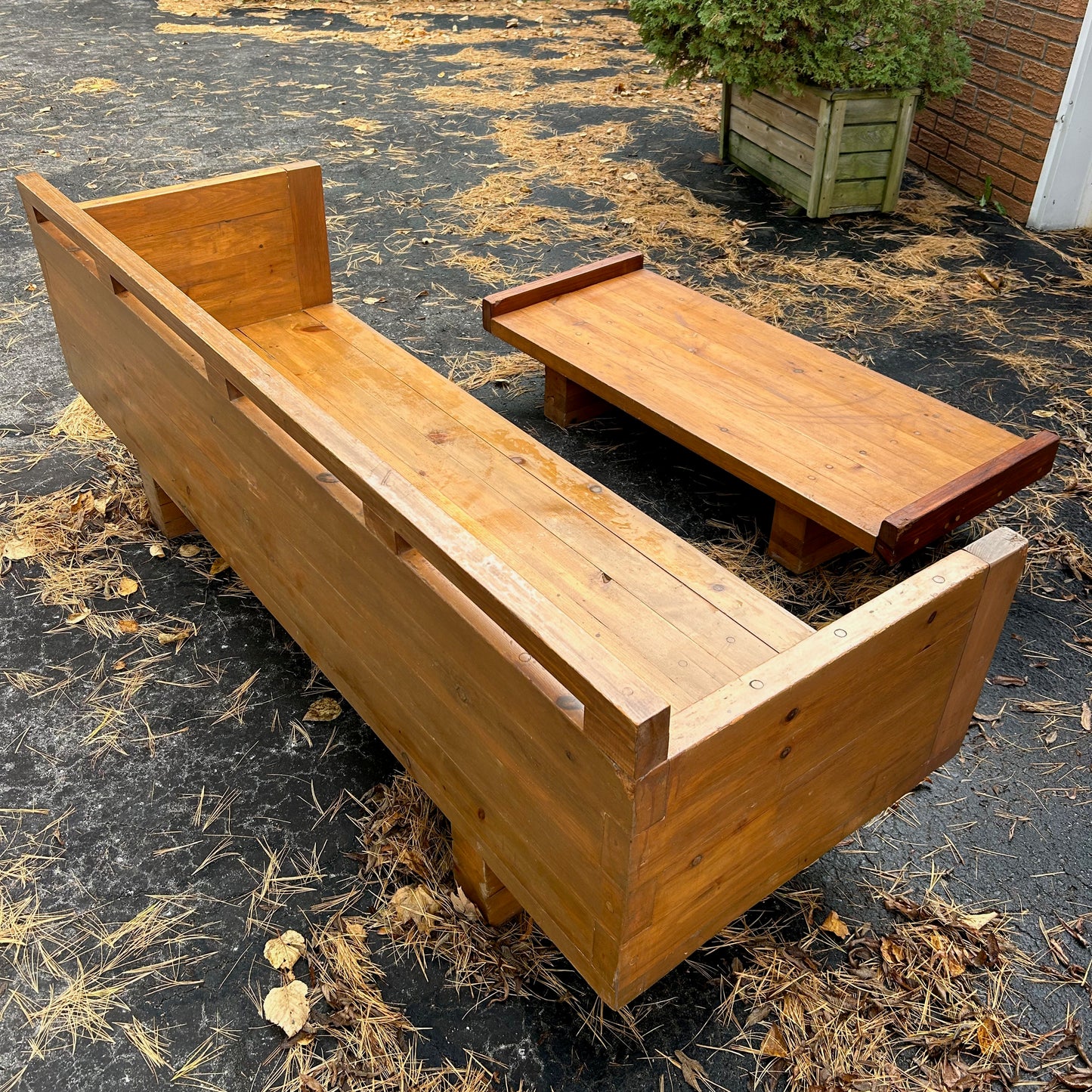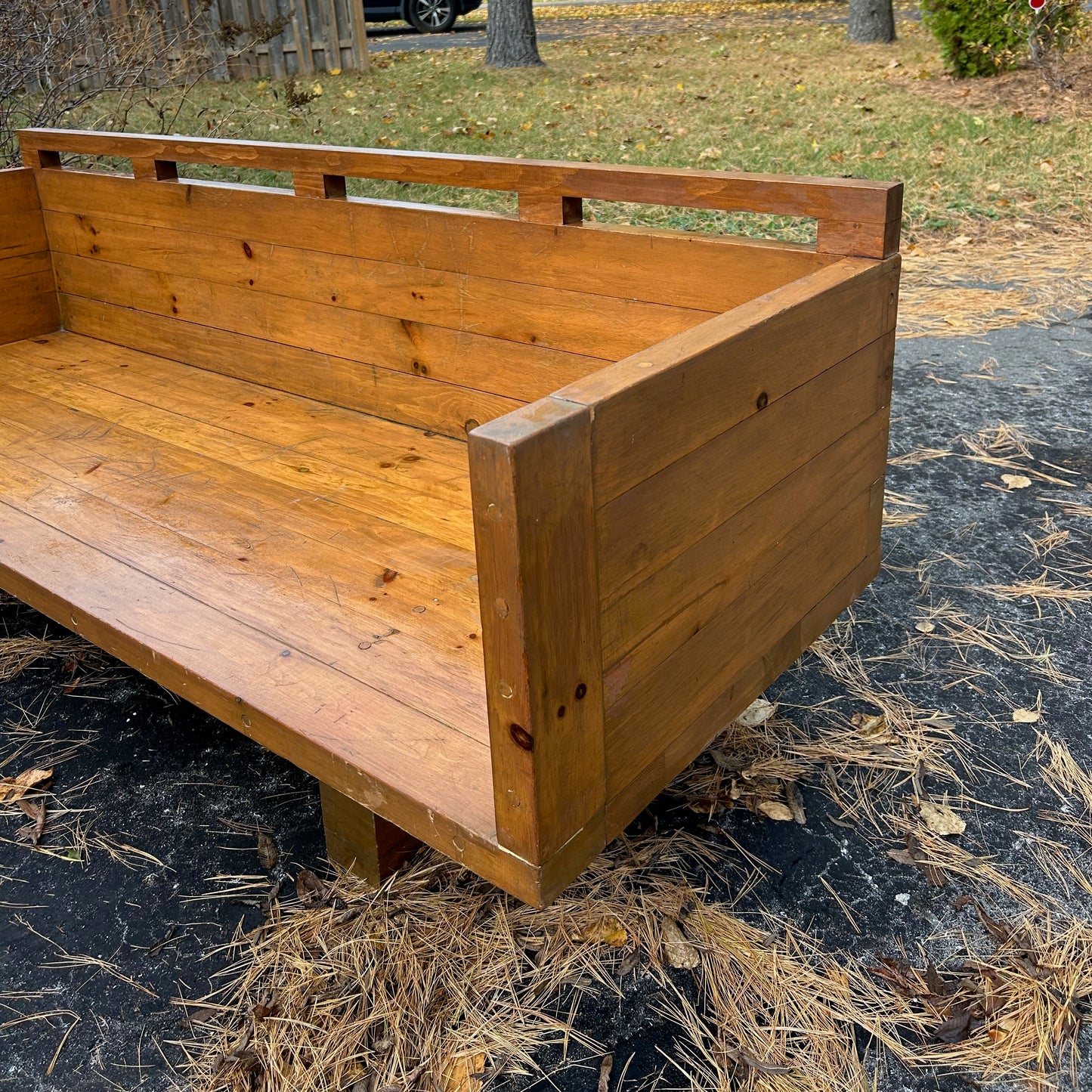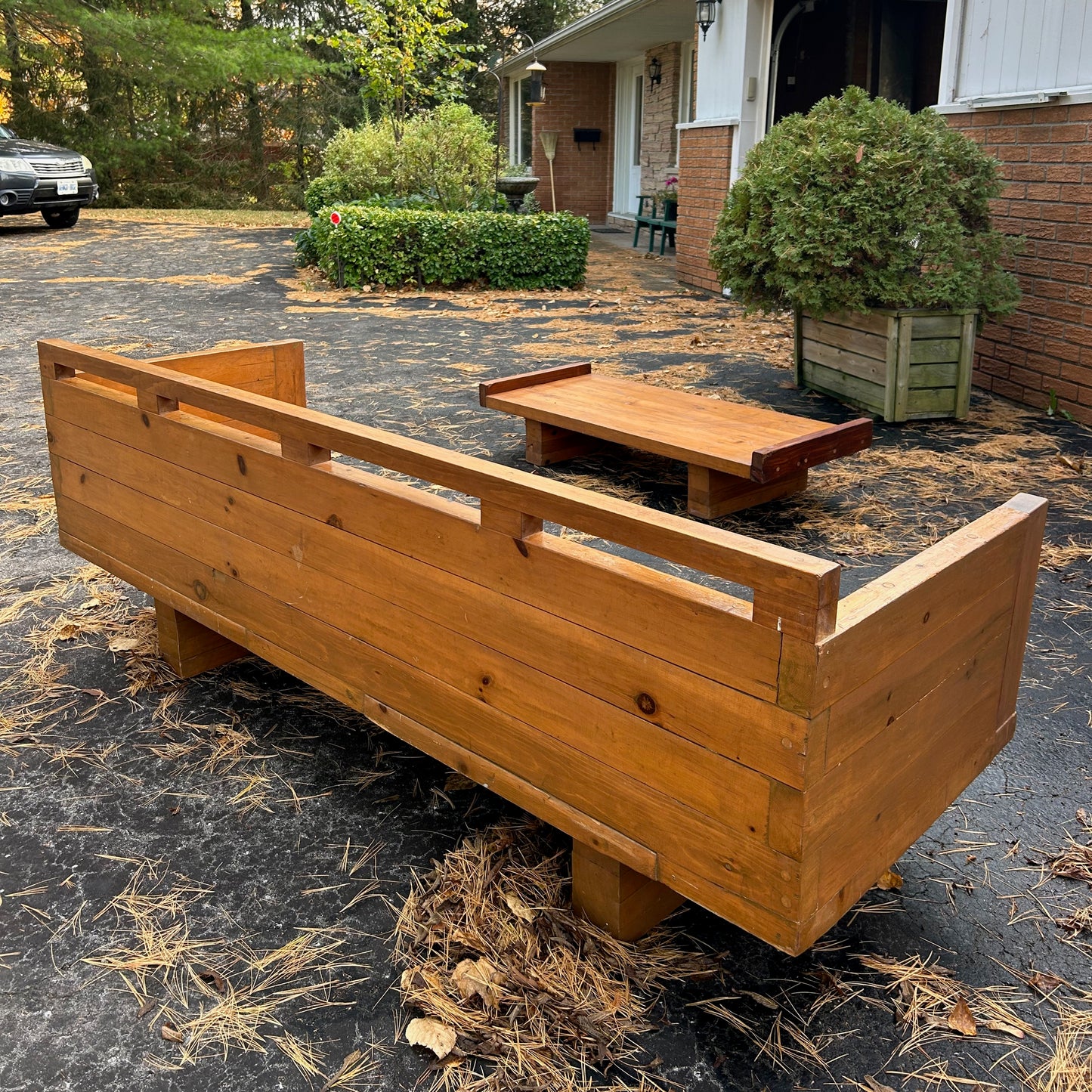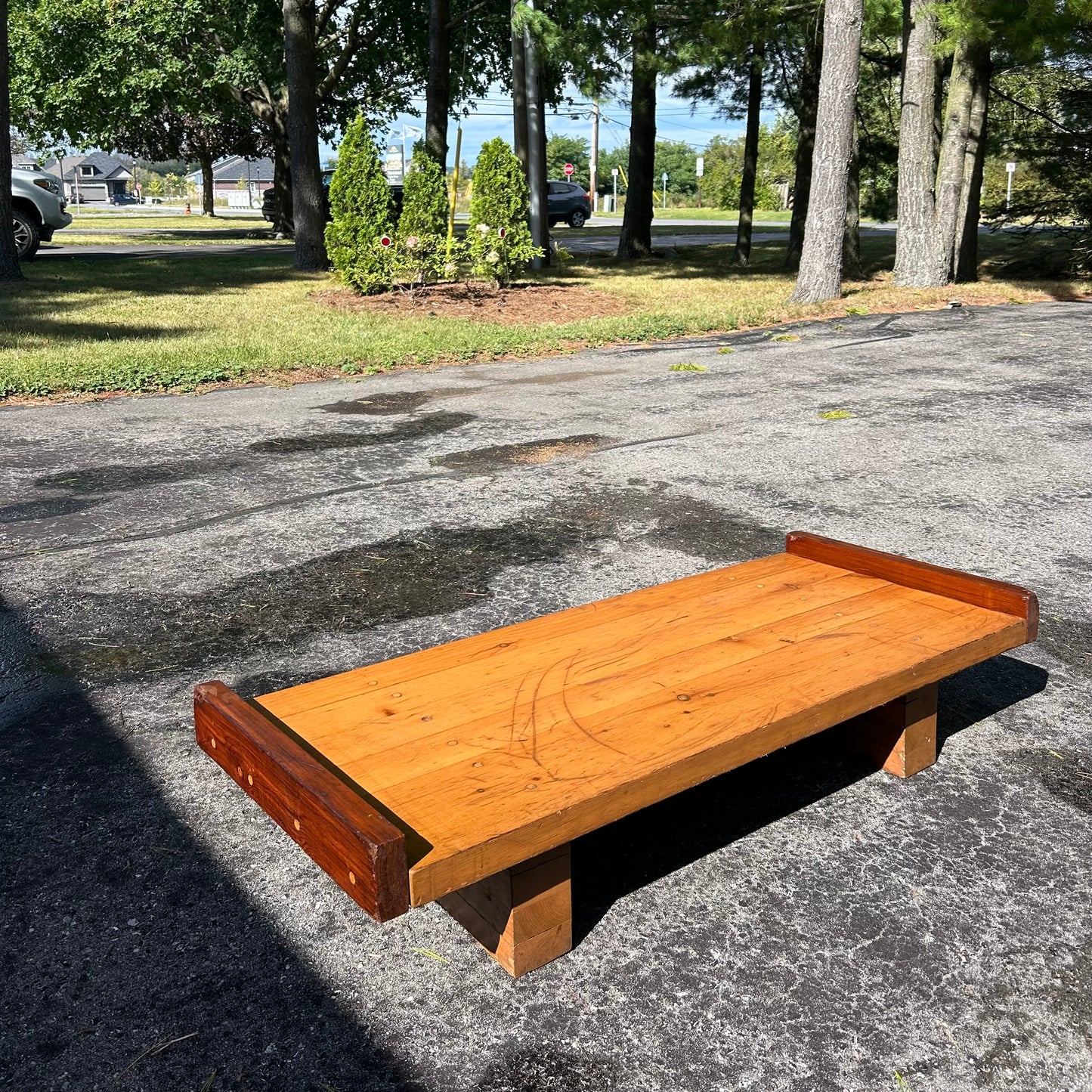Inabstracto
Rare Rita Letendre Furniture
Rare Rita Letendre Furniture
One of a kind, hand made rustic modern living room furniture by Rita Letendre, OC OQ OOnt RCA LL. D. (November 1, 1928 – November 20, 2021)Rita was a Canadian painter, muralist, and printmaker associated with Les Automatistes and the Plasticiens. She was an Officer of the Order of Canada and a recipient of the Governor General's Award.
Rita & her husband, sculptor Kosso Eloul used this furniture collection in their last home together on Carlton Street in Toronto as featured in Home Decor Canada in 1981.
Made from Quebec pine, 3 wood benches/sofas and a coffee table. The coffee table had a granite top (as shown in collection photos). The table, as it is today, is included here. A new granite top could be custom built. The cushions were discarded but we can provide custom cushions if desired. Made in Canada, 1970s.
More photos of the sofas coming soon. Please inquire; ideally these will be sold as a collection.
Dimensions/Prices
2 Pine Sofas:
Height (back): 26.25 in. Height (sides): 23.50 in. Depth: 26 in. Length: 75.5 in.
Pine 1 Sofa: Height (back):
26.25 in. Height (sides): 23.50 in. Depth: 26 in. Length: 96 in.
Pine Coffee Table: See photos, this no longer has marble top.
Height: 10.5 in. Length: 51 in. Width: 21 in.
Biography
Born in Drummondville Quebec in 1928, Rita Letendre moved to Montreal in 1942 with her parents and six siblings and cultivated her childhood passion for drawing into one of the longest and most illustrious artistic careers in Canada. After a brief period spent studying at l’École des beaux arts in 1948, Letendre discovered a circle of artists known as the Automatistes who were experimenting with colour and form in a way that resonated deeply with her. These artists drew on life’s intensities and, like the young fiery Letendre, were determined to make their unique mark on the world. Letendre remained committed to their spirit of free expression and spontaneity of abstraction throughout her life. She would go on to rigorously experiment with space, movement, and tension working with oils, pastels, acrylics, palette knife, and eventually the airbrush, which she began using in 1971.
Her intense and vibrant colour field paintings are composed of densely applied gestural strokes, evoking raw states of emotion and restlessness, which became a trademark. Another defining moment came when she met her future husband, Kosso Eloul, on a trip to Spoleto Italy in 1962. Eloul was a Russian born Israeli sculptor and together they would work and travel the world, their union one of harmony, love and respect. Both Letendre and Eloul had tremendous energy and derived tremendous inspiration from one another. When they weren’t creating art, they were entertaining hundreds of guests in the townhouse they shared on Sherbourne Street in Toronto – a place that emanated warmth and hummed with life.
Letendre would go on to play a significant role in the history of public art in Toronto, where she was commissioned to create many large-scale public projects, including major murals at Ryerson University and Royal Bank Plaza. She was also commissioned to design a huge coloured skylight for the ceiling of Glencairn (TTC) subway station in Toronto entitled "Joy"; which was eventually removed at Letendre’s request because the panels had faded after being exposed to many years of sunlight. However, "Joy" was reengineered and reinstalled in Glencarin Station in 2014 and cast a warm, orange glow over commuters to this day.
At the time, Letendre was often the only woman artist considered for – and awarded – such major commissions, and her involvement in public art was unprecedented. As major infrastructure developed throughout the 1970s, Letendre’s work continued to be featured in subway stations, universities, and offices buildings across the city.
At one point, Letendre had as many as 12 public works on view, her most famous being Sunrise, a mural of 60 by 60 feet installed on the outside wall of the Neill-Wycik Building on Gerrard Street, and which has since been recreated in all its original glory at the Evergreen Brickworks in summer 2021. Letendre’s very first large-scale public work, a 24 by 21-foot mural titled Sunforce created for the University of California at Long Beach in 1965, has also recently been restored to its original state in honour of the artist.
At Gallery Gevik’s 90th birthday celebration for the Artist, Wanda Nanibush, Curator Indigenous Art at the Art Gallery of Ontario, summed up the artist when she remarked that Rita Letendre “paints fire and light in a way we’ve never seen before. [Throughout her life,] she was always thinking, feeling and experiencing light both spiritually and in terms of the canvas. I learned this from being in front her work. Her paintings open up our hearts and souls to what life can be, and that makes us want to live better, more passionately and stronger. This is what Rita Letendre has brought to us through her work and who she was as a person." — Gevik Gallery
Share













